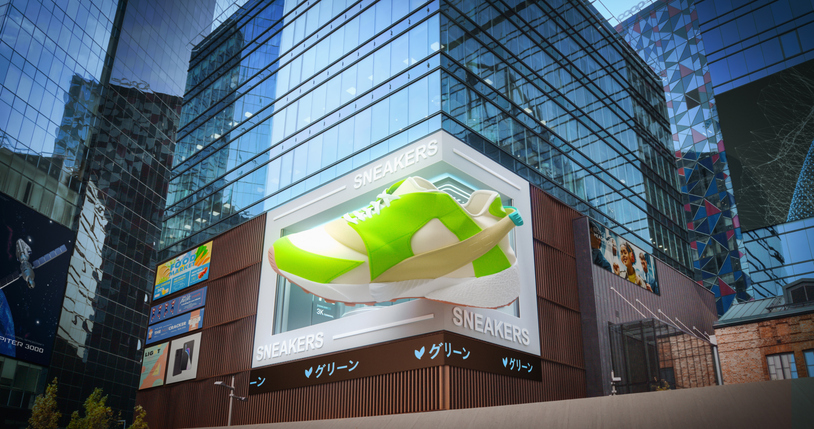
Breaking Down the Buzz Around 3D Billboards
In the world of OOH advertising, few formats have created as much excitement as 3D and anamorphic billboards. From viral campaigns in Piccadilly Circus to digital takeovers in Times Square, these eye-catching formats have redefined how audiences engage with outdoor content. Yet, while the terms are often used interchangeably, there’s a distinct difference between the two.
A 3D billboard refers to any outdoor screen that creates a three-dimensional visual effect, giving the illusion of depth and realism beyond the flat surface. It could be achieved through physical build-outs, digital motion, or clever perspective design. These billboards are designed to make visuals appear as if they’re emerging into real space.
3D billboards often rely on special LED screen technology that allows for high-definition movement and shadowing. They can be seen from multiple angles and are not dependent on a single viewing position, making them a popular choice for high-footfall locations where large crowds experience the ad from various perspectives.
The Art of Anamorphic Illusion
An anamorphic billboard, on the other hand, is a specific type of 3D creative that uses forced perspective to create its visual effect. The artwork is carefully designed so that when viewed from one precise angle, it appears three-dimensional – even though it’s actually a flat digital or printed surface.
This technique relies on optical illusion rather than hardware. The 3D illusion only fully “works” when the viewer stands in the correct position. Anamorphic campaigns are typically planned with this single vantage point in mind, often aligning with how cameras or pedestrians approach the billboard.
A well-known example is Maybelline’s London Underground 3D mascara ad, which appeared to have a real tube train brushing through giant mascara bristles. It became one of the most talked-about outdoor campaigns of 2023. Another standout was Nike’s Air Max Day display, where the shoe appeared to float mid-air above the screen. Both used anamorphic perspective mapping to create a moment of disbelief that encouraged filming and sharing on social media.
Why Advertisers Love Both
Both 3D and anamorphic billboards have become powerful storytelling tools in digital out-of-home advertising (DOOH). They capture attention in seconds, drive organic online sharing, and position brands as innovative and culturally relevant.
- 3D billboards are perfect for delivering large-scale, high-impact experiences visible from multiple directions, ideal for locations like Leicester Square, Piccadilly Circus, or major transport hubs.
- Anamorphic billboards are often more controlled, designed to produce one perfect viral angle that looks incredible on video, perfect for digital-first campaigns that bridge OOH and social media exposure.
For brands, the choice between them depends on the goal of the campaign. A launch looking to dominate real-world attention might lean toward a 3D format, while a social-led campaign chasing viral traction might opt for anamorphic design.
The Future of OOH Storytelling
We’re seeing increasing demand for immersive formats across London and other global cities. As technology advances, the line between digital art and outdoor advertising continues to blur. The fusion of 3D and anamorphic design, often supported by programmatic DOOH capabilities, means advertisers can now combine creativity with flexibility, adapting visuals in real time while maintaining cinematic impact.
These formats represent more than just spectacle. They’re reshaping how audiences experience advertising, blending art, technology, and narrative into one shared urban moment.
For brands ready to make an unforgettable impression, the future of outdoor advertising is no longer flat. It’s vivid, immersive, and truly three-dimensional.


